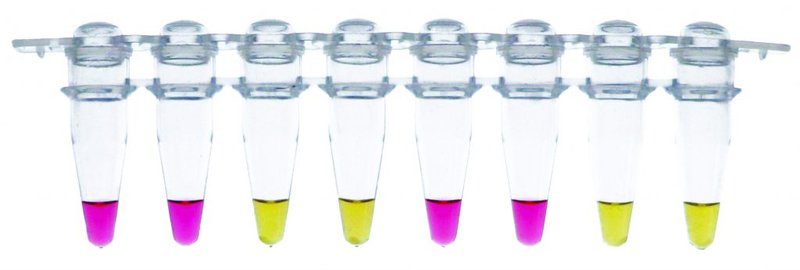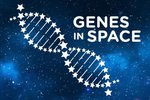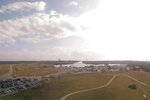Colorful genetic assay in space!
The Genes in Space team has been working hard to bring innovations in molecular biology to both students and space. In that spirit Genes in Space winner Julian Rubinfien is bringing a new technique to the ISS as a part of his experiment that launched on April 18th, 2017. Here Dr. Nathan Tanner from New England Biolabs explains this exciting assay.
Colorful genetic assay in space!
Guest post by Nathan A. Tanner, Ph.D., New England Biolabs
Much of modern biology and medicine depends on the ability to accurately identify living things, whether it’s a virus, tumor, mystery infection, or even a previously unknown species. Fortunately, all living things and viruses carry unique signatures in their DNA or RNA genomes. Once these signatures are identified, they can be used as a way to detect the material of interest in a variety of settings/situations. For over 30 years, the primary way to do this has been via the polymerase chain reaction (PCR). In PCR, heat is applied to melt double-stranded DNA (denaturation), then samples are cooled to allow binding (annealing) of specific, short pieces of DNA called primers. A special enzyme (DNA polymerase) can then use the primers as a starting point to copy the DNA signature. This powerful signal amplification process is repeated for approximately 30 cycles to generate enough material to enable downstream detection (commonly via gel electrophoresis) from even a tiny amount of starting material. And this is not just true on earth - in 2016, astronauts Tim Peake and Jeff Williams carried out the first PCR experiment in space, designed by Genes in Space winner, Anna-Sophia Boguraev. To learn more about PCR, see our resources on www.genesinspace.org/learn/.
PCR is certainly routine and quite powerful, but it’s not perfect for every setting. Additional methods of DNA amplification have been developed to complement PCR. Loop-mediated isothermal amplification (LAMP; Notomi et al, Nucleic Acids Research 2000) is one such example and it’s being used by Genes in Space winner Julian Rubinfien as part of his telomere investigation. LAMP works at a single temperature (isothermal) using DNA polymerases that have the ability to read through double-stranded DNA without heating (“strand displacement” activity). LAMP uses specially designed primers that form “loop” structures, which allow the polymerase to initiate synthesis at multiple locations, creating strikingly large amounts of DNA in a short period of time (a helpful illustration of how LAMP works is here). Detecting that DNA is now even simpler, with a color-based modification to LAMP that Genes in Space partner, New England Biolabs, developed (Tanner et al., Biotechniques, 2015). In colorimetric LAMP, the changing pH of the amplification reaction is used to drive a color change, making DNA detection as easy as telling pink from yellow.

LAMP is already being used for easy detection of targets everywhere – from farms to doctors’ offices, and very soon, thanks to Genes in Space, it will also be used aboard the International Space Station. Up on the ISS, Julian’s colorimetric LAMP experiment will utilize the miniPCR thermocycler to incubate his samples, and when they’re done (if all goes well), the astronaut doing the experiment will know whether the telomeric DNA signature was detected simply by reading the color of the tubes!
Using color to detect DNA may seem like just a bit of fun, but finding ways to put results in the hands of the astronauts themselves will be critical to helping them survive and thrive wherever the deep space missions of the future may take them…


